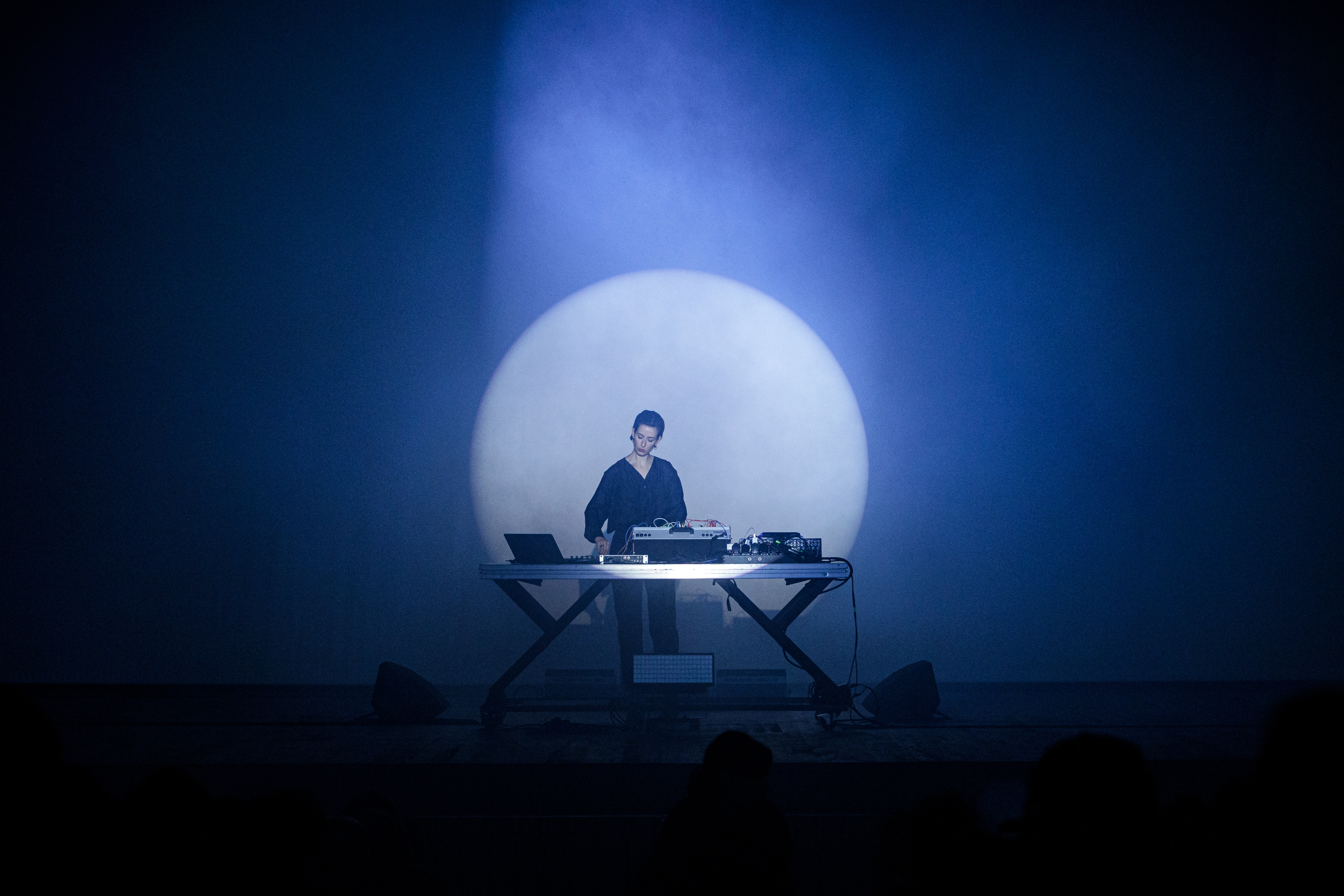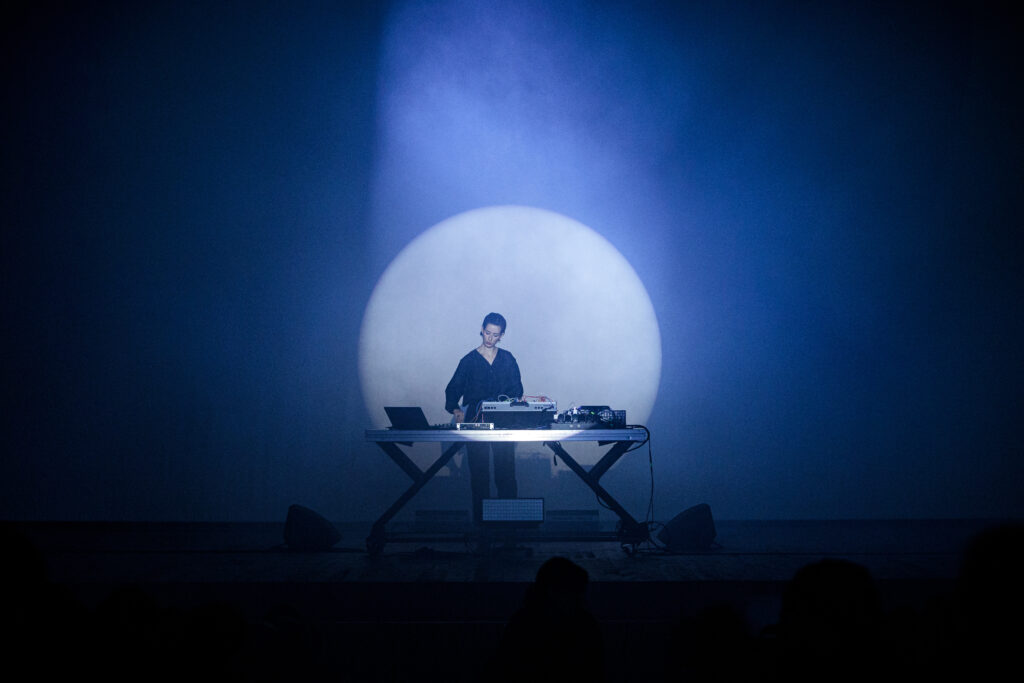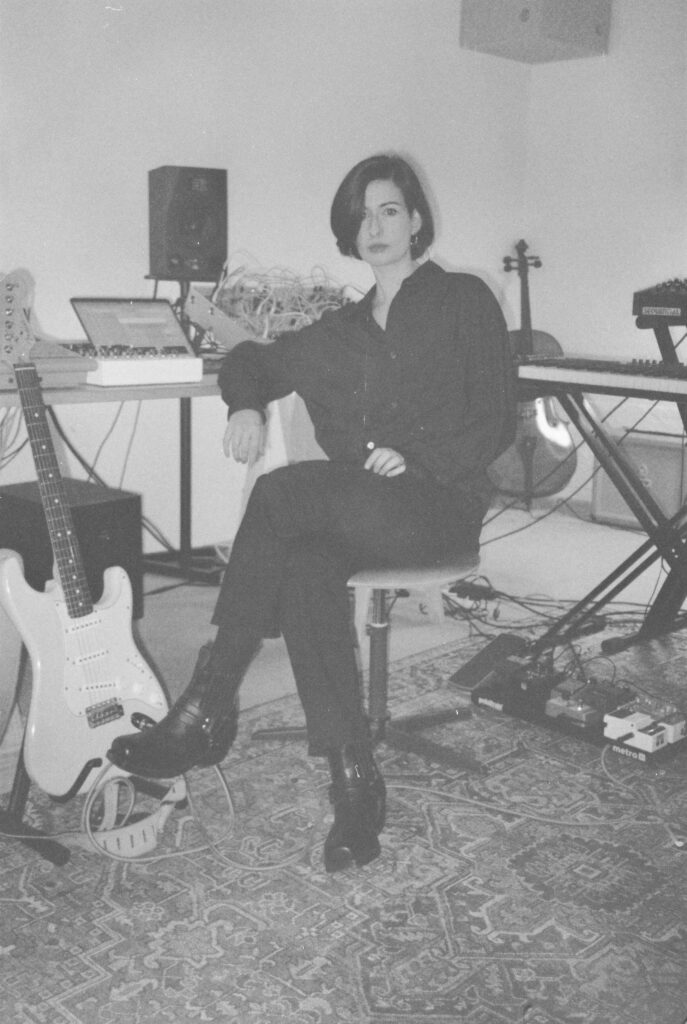

The music of Berlin composer Maya Shenfeld is as powerfully evocative as it is strikingly intimate. Through a mastery of sound sculpting and a visionary approach to composition, Shenfeld has established herself as one of the most vital voices in Berlin’s New Music scene. Her work exists in liminal spaces, collapsing the boundaries between electronic synthesis and organic sound, drawing equally on both the classical tradition and underground experimentalism.
You are classically trained. Could you talk about your background? What led you to music, and to a path leading away from classical musical structures to a more “free” and exploratory sonic expression?
This might sound like a bit of a cliché, but ever since I can remember, I always gravitated towards music. From a young age, I attended a music-focused school affiliated with the Jerusalem Academy of Music, which offered an old-world, rigorous, classical musical education. It’s funny, because I think most of what I know about music today, despite almost a decade of study in higher education, I learned during those years as a teenager in Jerusalem.
But I always felt limited by the traditional role ascribed to the performer in classical music. At the Berlin University of the Arts (UdK) my focus shifted to improvisation, experimental music and composition. At the same time, I picked up an electric guitar, started nerding out on amps and gear, and joined the indie punk rock scene in Berlin; I found myself shuttling between the Konzerthaus Berlin, and the city’s most infamous hole-in-the-wall underground Indie venues (a far cry from its glamorous Techno palaces). Playing in a band was about embracing collaboration, chance, imperfection, and fierceness. A most welcome (and freeing) antidote to the sober, fluorescent-lit recital halls of my classical education. In a way, it amplified my artistic “voice”, which the hierarchical (and patriarchal) classical music environment had obscured.
I never stopped loving classical music, though, and it was through this experience that I started to engage with it differently, bringing a kind of immediate, unrestrained, and playful connection to it.
Spaces, locations and their specific sonic properties play an important role in your work – for instance, the world’s deepest marble quarries in Portugal on Under the Sun.
Both In Free Fall and Under the Sun are projects I developed over several years. And in that sense, the music becomes a documentation of thoughts, readings, emotions, sonic experiments, and places I’ve been to during the production period. For Under the Sun, I wanted to explore the intricate interplay between the cyclicality (repetition) and linearity (or entropy) of time. Echoing Ecclesiastes’ maxim “There is nothing new under the sun,” the project’s title alters the original quote to create a tension between the Stoic philosophy it implies—the sense of futility and eternal return—and the possibility that this might actually not be the case in the light of climate change and other looming challenges, both personal and planetary.
The production of the record was intertwined with the production of the audio-visual show with Portuguese visual artist Pedro Maia. As we discussed the concept, Pedro suggested shooting the visuals in the marble quarry region of Vila Viçosa, Portugal. The quarries provided a fitting setting, resonating both acoustically and visually. They served as an ominous symbol, starkly illustrating how human extraction is sculpting our planet. And the mechanical roar of extraction and the long reverberation off the quarry walls are audible throughout the show.
You’ve been working with visualist Pedro Maia. Can you talk about your collaboration and the audiovisual extension of your work?
Apart from our close friendship, what brings us together from a creative standpoint is a passion for analogue processing, as well as cinematic narratives. This is our second collaboration; we started with the production of the video for the first record, Body, Electric. After that experience, there was an immediate trust and a shared language that led us to collaborate on the show for Under the Sun and two music videos to accompany the release. It felt special to have developed the project together from the very beginning. And it so happened that the production week in Portugal was the hottest on record, so we explored the theme of under the sun almost too literally. For the shows, the audio and visuals are performed live. The visuals respond to the way the sound is manipulated, it’s like a dance between the two elements.

What other projects are you currently involved in?
In parallel to touring and studio work, I’ve been working as a researcher on Ableton’s learning team, led by Dennis DeSantis. We developed a companion website to the Live 12 new integrated tuning support. The site will provide context for the tuning systems available within Live, as well as tools for working with the different tuning systems and creating your own. It was an honor to collaborate on this project with Sami Abu Shumays for Arabic Maqam, Idin Samimi Mofakham for Persian Radif, and Marc Sabat for just intonation and European historical tunings. It’s a very exciting step for digital audio production, finally expanding (technically) beyond the limited and Western possibilities of the 12 EDO. And then there’s more music and film stuff in the pipeline. Not much I’m ready to talk about quite yet, but stay tuned.
Photo: Adriano Ferreira Borges, Semibreve; Omri Liven